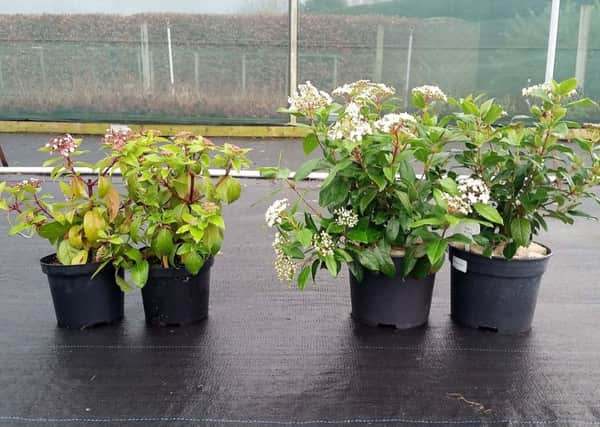DAERA Management Notes: Horticulture


The Fertiliser Advisers Certification and Training Scheme (FACTS) is a nationally validated course developed by the fertiliser industry as a form of self-regulation. The emphasis is on practical knowledge applicable when selling or advising growers and giving advice that is economically and environmentally sound.
For relatively short production crops like bedding, pot plants, nursery stock and container grown cut flowers, the most practical method of fertiliser application is to use a low rate of base fertiliser or Controlled Release Fertiliser (CRF) supplemented by liquid feeding. This pattern provides flexibility as the strength, frequency and ratio of nutrients can easily be adjusted according to crop requirements.
Advertisement
Hide AdAdvertisement
Hide AdCRFs are manufactured and used in the form of granules. They are blended with the growing medium or applied to each pot either during the potting process (in the potting hole) or as a top-dress. The granules contain water soluble plant nutrients which are released over a period of time (5 to 6, 8 to 9, 12-14 or 16-18 month formulations). The time together with the rate of granule application determines the amount of nutrients potentially available to the plant. Both the nutrient release period and rate of application vary across the crops grown according to requirements and market supplies availability. It is important therefore that changes in the base fertiliser and in the type or rate of CRF are followed by adjustments. In case CRFs become exhausted before the plants leave the nursery or are transplanted, additional fertiliser can be added by top-dressing or liquid feeding. Time for nutrient release in the media must be allowed in the case of top-dressing. There are also variations, in terms of the frequency of nutrient release at the start of a crop, the so-called ‘fast start’ and ‘slow start’.
The growing media also plays a role in the type of fertiliser used. For instance, calcium nitrate could be used to compensate for nitrogen immobilisation in bark or wood-fibre containing mixes and lime might be needed to raise the pH in peat based media (around 5.5 but 4.5 for ericaceous species).
Integrated Pest Management
Under the title ‘Build to Adapt’ the recent International Plant Propagator Society European Region conference focused on aspects that directly impact the sustainability of our industry. One area of particular relevance was plant protection. Integrated Pest Management (IPM), as a decision making process that uses all available techniques to grow crops and suppress pests, diseases and weeds effectively, economically and in an environmentally sound manner was discussed. IPM steps for managing pest populations include:
* Planning and managing ecosystems to prevent organisms from becoming pests.
Advertisement
Hide AdAdvertisement
Hide Ad* Putting in place mechanisms to identify pest problems at early stages, for example carrying out regular crop walks and keeping simple records of findings.
* Monitoring populations of pests and beneficial organisms and damage caused by pests and environmental conditions.
* Using injury thresholds to make treatment decisions.
* Suppressing pest populations to acceptable levels using a combination of biological, physical, cultural, mechanical, behavioural and chemical controls.
* Evaluating the effectiveness of treatments.
IPM takes into account factors that influence plant health and vigour as well as those that affect the health and reproductive capacity of pests, diseases and weeds. The need for optimising growing conditions for the crop while making them less favourable for pest development was emphasied. Key aspects in IPM programmes are:
* Sanitation.
* Optimising crop growth.
* Monitoring crops for pests.
* Knowledge of the life cycles of the main pests.
* Timely use of a range of control tools.
Good crop hygiene focuses on starting clean and preventing the introduction of pests. Prevention is easier and less expensive than managing established problems.